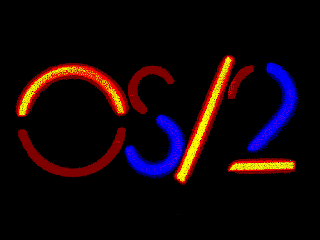 A family of multitasking operating systems for x86 machines from IBM. OS/2 Warp is the client version, and Warp Server is the server version. With add-ons, DOS and Windows applications can also be run under OS/2 (see Odin). The server version includes advanced features such as the journaling file system (JFS) used in IBM's AIX operating system. Like Windows, OS/2 provides a graphical user interface and a command line interface. See OS/2 Warp, Warp Server and eComStation.
A family of multitasking operating systems for x86 machines from IBM. OS/2 Warp is the client version, and Warp Server is the server version. With add-ons, DOS and Windows applications can also be run under OS/2 (see Odin). The server version includes advanced features such as the journaling file system (JFS) used in IBM's AIX operating system. Like Windows, OS/2 provides a graphical user interface and a command line interface. See OS/2 Warp, Warp Server and eComStation.Although highly regarded as a robust operating system, OS/2 never became widely used. However, it has survived in the banking industry, especially in Europe, and many ATM machines in the U.S. have continued to run OS/2 due to its stability.
Features
OS/2 includes Adobe Type Manager for rendering Type 1 fonts on screen and providing PostScript output on non-PostScript printers. OS/2's dual boot feature allows booting up into OS/2 or DOS.
The OS/2 Workplace Shell graphical user interface is similar to Windows and the Macintosh. Originally known as Presentation Manager (PM), after Version 2.0, PM referred to the programming interface (API), not the GUI interface itself.
Evolution
The first versions of OS/2 were single-user operating systems written for 286s and jointly developed by IBM and Microsoft. Starting with Version 2.0, versions were written for 32-bit 386s and up and were solely the product of IBM. Following is some of the evolution:
OS/2 16-bit Version 1.x
The first versions (1.0, 1.1, etc.) were written for the 16-bit 286. DOS compatibility was limited to about 500K. Version 1.3 (OS/2 Lite) required 2MB RAM instead of 4MB and included Adobe Type Manager. IBM's Extended Edition version included Communications Manager and Database Manager.
OS/2 32-bit Version 2.x - IBM
Introduced in April 1992, this 32-bit version for 386s from IBM multitasked DOS, Windows and OS/2 applications. Data could be shared between applications using the clipboard and between Windows and PM apps using the DDE protocol. Version 2.x provided each application with a 512MB virtual address space that allowed large tasks to be easily managed.
Version 2.1 supported Windows' Enhanced Mode and applications could take full advantage of Windows 3.1. It also provided support for more video standards and CD-ROM drives.
Communications and database management for OS/2 were provided by Communications Manager/2 (CM/2) and Database Manager/2 (DB2/2). CM/2 replaced Communications Manager, which was part of OS/2 2.0's Extended Services option.
OS/2 32-bit Version 3 - IBM
In late 1994, IBM introduced Version 3 of OS/2, renaming it OS/2 Warp. The first version ran in only 4MB of memory and included a variety of applications, including Internet access.
Windows NT - Microsoft
Originally to be named OS/2 Version 3.0, this 32-bit version from Microsoft was renamed "Windows NT" and introduced in 1993. See Windows NT.








I have to say that I felt a little intimidated to visit; I am very inexperienced with technology in general. Still this article was interesting and easy for me to understand.
ReplyDeleteHi there, yeah this post is actually good and
ReplyDeleteI have learned lot of things from it regarding blogging.
thanks.
Stop by my blog post - what should i weigh